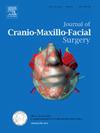Condylar osseous changes following conservative therapies: A cone-beam computed tomography longitudinal study on adult patients with degenerative temporomandibular joint disease
IF 2.1
2区 医学
Q2 DENTISTRY, ORAL SURGERY & MEDICINE
引用次数: 0
Abstract
This retrospective study aimed to comprehensively investigate the impact of non-surgical treatments on condylar osseous changes in adult patients with degenerative joint disease (DJD). Radiographic and clinical data were collected for analysis. Cone-beam computed tomography (CBCT) was used to diagnose DJD, including flattening, erosion, osteophytes, sclerosis and cysts. Condylar osseous changes were divided into three classifications: progression, stability and remission. Kaplan-Meier analyses were performed to evaluate progression-free probability. Hazard ratios (HRs) of overall and specific DJD progression were calculated with multivariate Cox analysis. Hyaluronic acid (HA) injection significantly reduced the progression-free probability (P = 0.0312). HRs of progression after stabilization splint (SS) treatment within one year, glucosamine treatment within six months and HA injection was 3.41 (95% CI: 1.70–6.84; P = 0.0005), 0.35 (95% CI: 0.14–0.86; P = 0.0226), and 1.84 (95% CI: 1.06–3.20; P = 0.0313), respectively. HRs of progression of flattening, erosion, osteophyte, and sclerosis adjusted for gender and age after HA injection were 2.77 (95% CI: 1.32–5.81; P = 0.0071), 2.12 (95% CI: 1.09–4.10; P = 0.0264), 3.38 (95% CI: 1.08–10.54; P = 0.0361) and 2.78 (95% CI: 1.02–7.52; P = 0.0447) respectively. HA injection and SS treatment were possible risk factors for TMJ deterioration, while glucosamine treatment was possible protective factor against TMJ deterioration.
保守治疗后髁突骨性改变:成人退行性颞下颌关节疾病患者的锥形束计算机断层纵向研究。
这项回顾性研究旨在全面探讨非手术疗法对成年退行性关节病(DJD)患者髁突骨质变化的影响。研究收集了放射学和临床数据进行分析。锥形束计算机断层扫描(CBCT)用于诊断DJD,包括扁平化、侵蚀、骨质增生、硬化和囊肿。髁状突骨质变化分为三个等级:进展期、稳定期和缓解期。采用卡普兰-梅耶分析评估无进展概率。采用多变量考克斯分析法计算总体和特定DJD进展的危险比(HRs)。透明质酸(HA)注射可显著降低无进展概率(P = 0.0312)。稳定夹板(SS)治疗后一年内、氨基葡萄糖治疗后六个月内和注射透明质酸(HA)后病情恶化的HRs分别为3.41(95% CI:1.70-6.84;P = 0.0005)、0.35(95% CI:0.14-0.86;P = 0.0226)和1.84(95% CI:1.06-3.20;P = 0.0313)。注射 HA 后,根据性别和年龄调整的扁平化、侵蚀、骨质增生和硬化进展的 HR 分别为 2.77 (95% CI: 1.32-5.81; P = 0.0071)、2.12 (95% CI: 1.09-4.10; P = 0.0264)、3.38 (95% CI: 1.08-10.54; P = 0.0361) 和 2.78 (95% CI: 1.02-7.52; P = 0.0447)。注射 HA 和 SS 治疗可能是颞下颌关节退化的风险因素,而氨基葡萄糖治疗可能是颞下颌关节退化的保护因素。
本文章由计算机程序翻译,如有差异,请以英文原文为准。
求助全文
约1分钟内获得全文
求助全文
来源期刊
CiteScore
5.20
自引率
22.60%
发文量
117
审稿时长
70 days
期刊介绍:
The Journal of Cranio-Maxillofacial Surgery publishes articles covering all aspects of surgery of the head, face and jaw. Specific topics covered recently have included:
• Distraction osteogenesis
• Synthetic bone substitutes
• Fibroblast growth factors
• Fetal wound healing
• Skull base surgery
• Computer-assisted surgery
• Vascularized bone grafts

 求助内容:
求助内容: 应助结果提醒方式:
应助结果提醒方式:


